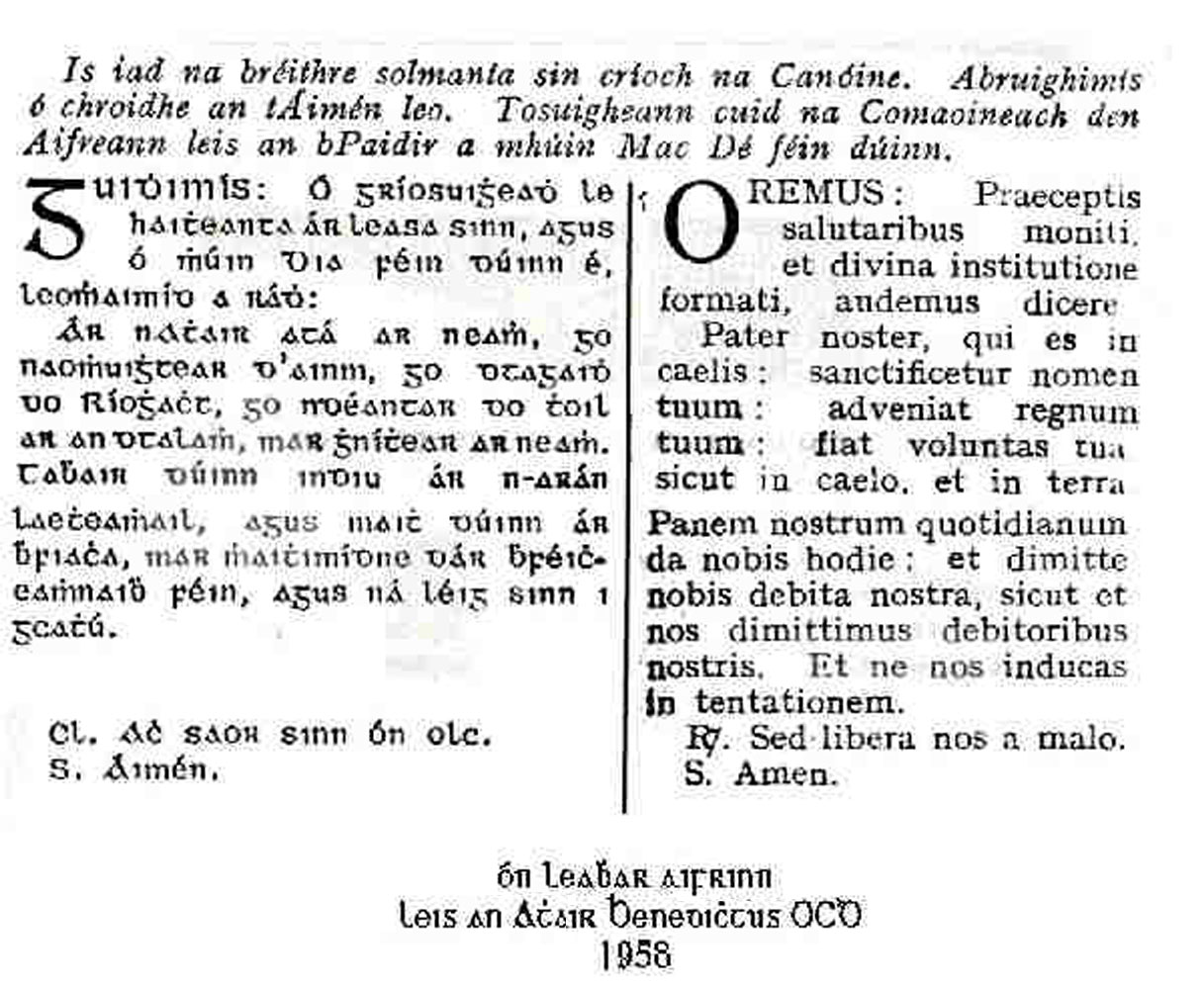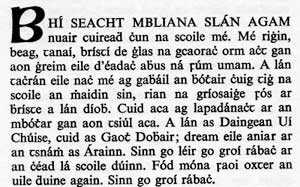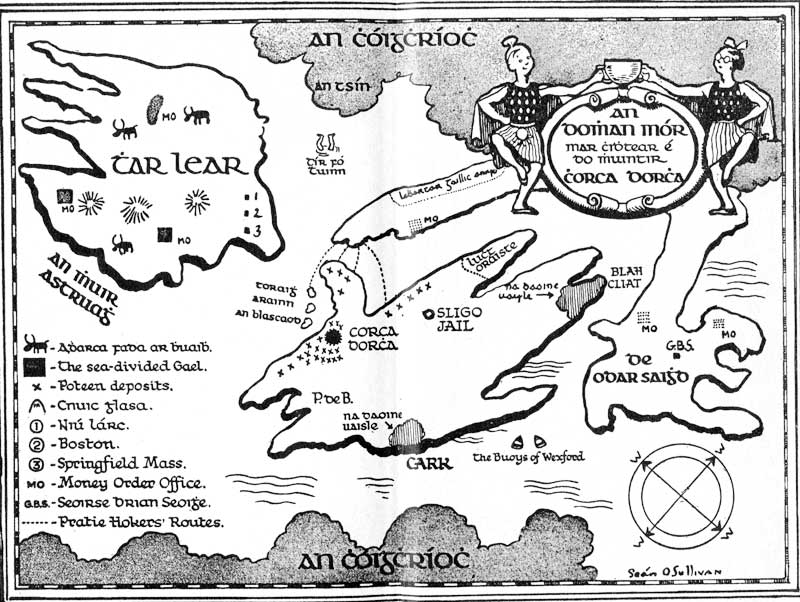Gaelic script.
It was changed to what was known as Roman Script or Cló Rómhánach when I was in secondary school. (The roman script is reproduced in the italicised introductory paragraph below, and is used throughout an t-Athair Benedict's book for "stage directions".) I think the rationale for the changeover was to facilitate a more modern presentation, as the choice available in the earlier script was limited by the number and size of fonts the printer was prepared to stock and demand for material in Irish was neither widespread nor adventurous. With the new script the printer did not have to incur any extra overheads for Irish as accented letters were contained in the standard fonts.

While the Roman Script is now ensconced and is likely to stay that way, despite the availability of a variety of "traditional" Irish fonts on the computer, it would be a pity to leave this little illustration without mentioning Liam Miller's Cló Nua-Rómhánach. This has only ever been used in one publication, the 1964 edition of An Béal Bocht, published by Dolmen Press. It is a fascinating attempt to import lenition into a mildly tweaked version of the Roman Script, and it works very well. Judge for yourself:

For those of you in need of a laugh and with some understanding of Irish language cultural hangups, I have reproduced the map of Corcha Dorcha by Séan Ó Suilleabháin, of the Royal Hibernian Academy, from the 1964 edition. Bain sult as.
